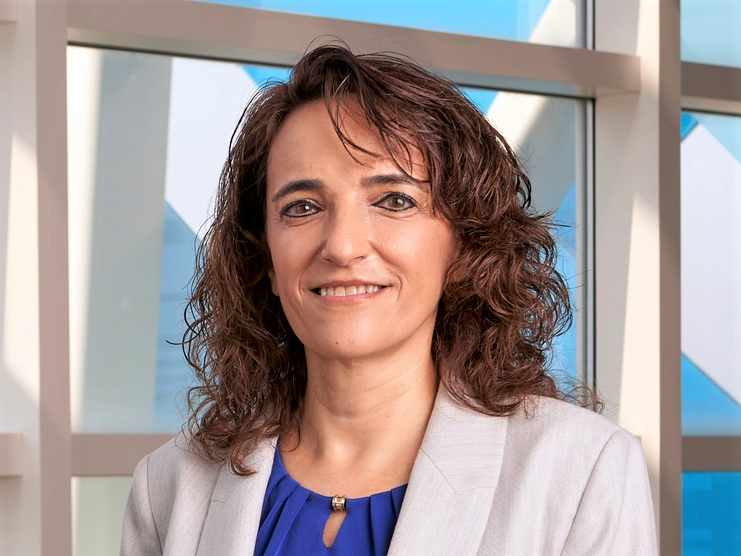Renamed Clinical and Translational Science Collaborative of Northern Ohio to reflect even broader reach with addition of two partner institutions
The National Institutes of Health (NIH) has awarded Case Western Reserve University School of Medicine’s Clinical and Translational Science Collaborative (CTSC) a seven-year, $56.3 million grant to continue—and expand—initiatives that improve people’s health in Northern Ohio and beyond.
The funding—a Clinical and Translational Science Award (CTSA) administered by NIH’s National Center for Advancing Translational Sciences—builds on nearly $175 million from the NIH since 2007 to support a collaborative among leading biomedical institutions in Northern Ohio. Combining efforts helps speed research breakthroughs for patients and increases the number and diversity of researchers and patients.
Since its inception, CTSC has included Cleveland Clinic, The MetroHealth System, University Hospitals (UH) and the VA Northeast Ohio Healthcare System (VANEOHS). Faculty at these partner sites all have appointments at the Case Western Reserve School of Medicine.
In this new grant cycle, the collaborative becomes the CTSC of Northern Ohio with the addition of two partner institutions—the University of Toledo and Northeast Ohio Medical University (NEOMED).
Also, Grace McComsey, vice dean for clinical and translational research at the School of Medicine and vice president of research and associate chief scientific officer at UH, who led the successful renewal application, has become CTSC director.

“New leadership, expansion of the collaborative beyond the Greater Cleveland area into Northern Ohio and a strategic focus on health equity will shape CTSC in its next chapter,” said Stan Gerson, dean and senior vice president for medical affairs at the School of Medicine. “The new partners bring expanded opportunities to maximize workforce development in rural medicine and vulnerable populations and add to our world-class team of researchers dedicated to bringing more treatment to more people more quickly.”
“The CTSC is about improving health through collaborations; there is a wealth of talent at CWRU and our six clinical partners,” McComsey said, “We need to join our complementary expertise to enhance and expedite innovation and educate and build the next generation of researchers.”
“We are honored that the NIH recognized our outstanding multi-institutional biomedical research team in Ohio with this award,” said Serpil Erzurum, Cleveland Clinic’s chief research and academic officer. “This collaborative CTSA grant will support and enable the important work of our researchers as they translate discoveries to improve the health of patients in Ohio and beyond.”

“The successful CTSC renewal is a testament to its impact on the wider biomedical ecosystem and the health of our community,” said Daniel Simon, president, academic and external affairs and chief scientific officer and Ernie and Patti Novak Distinguished Chair at University Hospitals and professor and senior associate dean at the School of Medicine. “We are also very proud that one of University Hospitals most accomplished leaders, Dr. Grace McComsey, has ascended to the role of (principal investigator) of the CTSC.”
“The renewed NIH support and the opportunity to welcome two new stellar partners couldn’t have come at a better time,” said John Chae, MetroHealth’s senior vice president and chief academic officer and senior associate dean and professor of physical medicine and rehabilitation and biomedical engineering at the School of Medicine. “The past few years have illuminated how interconnected we all are. We have made significant inroads in several key areas of community health. This provides momentum for us to accomplish even more.”
“We are so delighted to collaborate with our colleagues at Case Western Reserve University on this important initiative to help advance research across Northern Ohio for the benefit of Ohioans, the nation and our world,” said Christopher Cooper, dean of the University of Toledo College of Medicine and Life Sciences.
“VA Northeast Ohio Healthcare System is proud to be a partner in the Cleveland CTSC and its potential to improve healthcare for Northeast Ohio veterans while we contribute to the training of the next generation of clinicians and expanding biomedical knowledge for the nation,” said VANEOHS Chief of Staff Brian Cmolik.
“Northeast Ohio Medical University is honored and excited to be a new partner in the CWRU-led Clinical and Translational Science Collaborative. We are joining a world-class team of universities and health systems to expand the impact of this outstanding research program across Northern Ohio,” said NEOMED President John Langell. “The impact of this partnership on improving health equity in Ohio and beyond will be immeasurable.”
In the first three award cycles, CTSC:
- Tripled the number of biomedical companies spun out annually from Case Western Reserve, including entities advancing medications, rehabilitation devices and point-of-care diagnostic testing devices now used in resource-limited areas.
- Embedded community-based programs with CTSC faculty in leadership positions—initiatives focused on eliminating structural racism, linking clinical practice and public health, improving care of chronic diseases and encouraging healthy eating and safe places to play.
- Developed a robust, diverse and collaborative doctoral-level workforce through training programs, including involving researchers in pivotal national clinical trials.
- Led critical trials commended for recruiting many elderly and underrepresented minority participants, which resulted in substantive change in clinical practice for hypertension therapy.
- Contributed to improvement in processes and outcomes for hypertension, heart failure and type 2 diabetes in more than 60 public and private primary care practices—success that attracted enhanced state funding to extend the work across Ohio.
Even with these significant strides in addressing health disparities, Gerson said, much work remains to tackle the endemic environmental, structural and sociocultural factors that contribute to poor health outcomes for high-risk groups like African Americans, Hispanics, LGBTQ+ populations and residents of rural areas.
For more information, contact Bill Lubinger at william.lubinger@case.edu.

